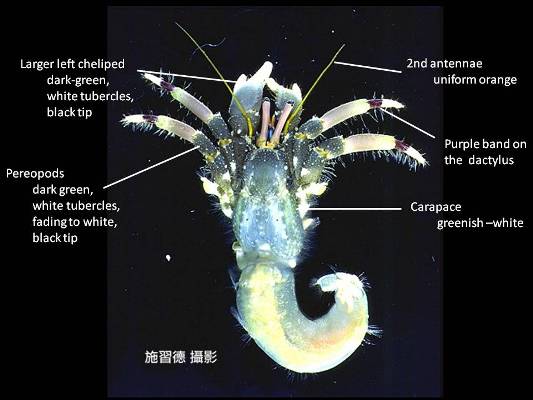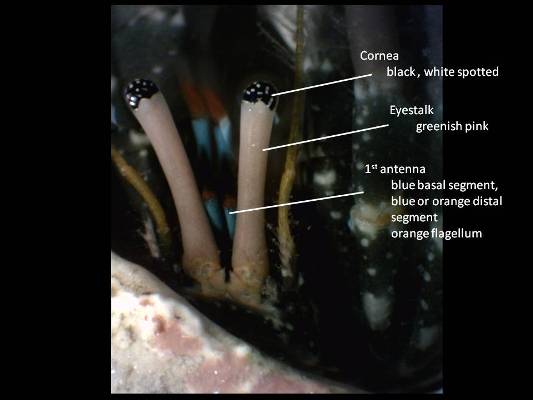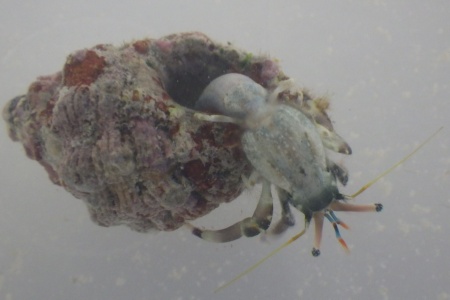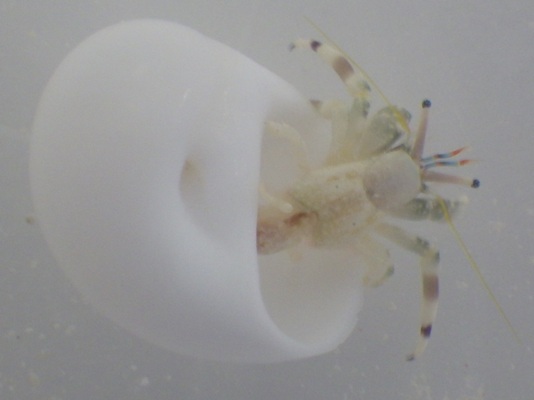Physical Description
Calcinus latens is one of the diverse and abundant group of hermit crabs, Calcinus. Male C. latens is larger than females: In the record from the tropical water in Maldives by Gherardi and Nardone (1997) , the size of the males ranges from two to seven mm in shield lengths, and females from two to six mm. The members of the genus Calcinus have larger left chelipeds with black tips in common(Poore 2004; Tudge 1995), and each species can be identified from the distinct color patterns (Malay & Paulay 2009).
a 
b 
|
|
The body of C. latens is colored in the unique pattern.
(a. Figure adapted from Shih 2012; b. photo taken in Heron Island, September 2013)
|
The carapace of Calcinus latens is of greenish color anteriorly, and white posteriorly (Mather & Bennett 1993). The first antennae have basal segments of blue, distal segments of either blue or orange, and flagellum of orange (Tudge 1995). The second antennae are uniformly orange (Mather & Bennett 1993). The eyestalks are uniform greenish pink and corneas are black and white spotted (Mather & Bennett 1993). The chelipeds are colored dark-green with scattered white tubercles, which gradually fades to white fingers but the tip of the left cheliped is black as mentioned earlier (Mather& Bennett 1993; Poore 2004). Other pereopods are also dark green with white tubercles proximally, fading to lighter green and white distally with the dark tips (Mather & Bennett 1993). The distinct feature of C. latens is the purple bands on the proximal end of the dactylus of these walking legs (Tudge 1995). In Heron Island, individual differences in the depth of the body colors were observed; some bore dark-green as described above, while others were pale and almost white. However, they shared the purple band on the leg which aided the identification of the species.
 
|
|
Individual color variations were observed among the crabs collected; but they still share the distinctive purple band on their legs.
(Photos taken in Heron Island, September 2013)
|
|